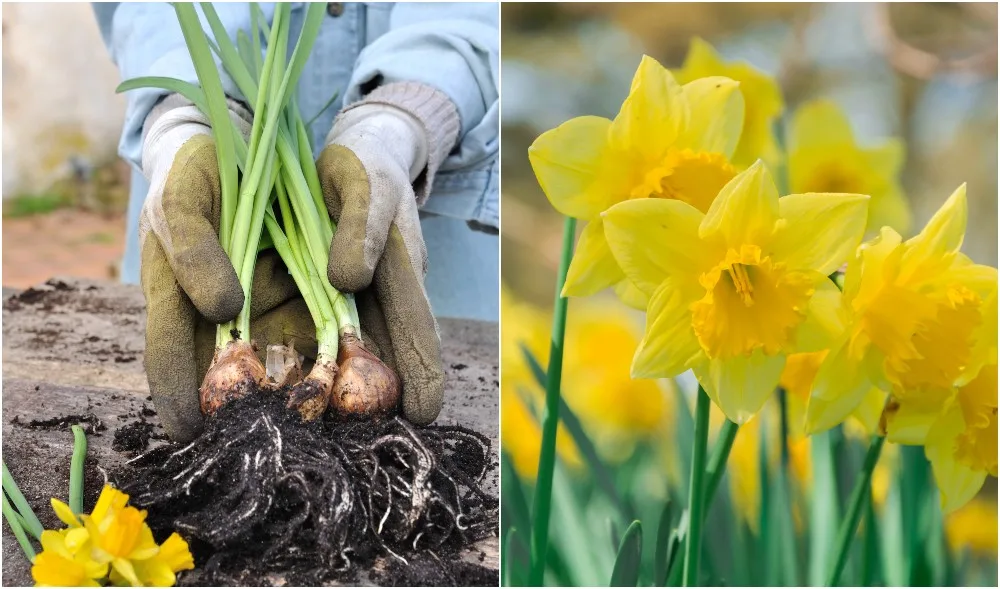
Daffodils are surely one of the cheeriest sights in a spring garden. Most gardeners will no doubt be aware that these are one of the earliest flowers to bloom in many a temperate climate garden.
But most gardeners fail to realize what a workhorse these dainty flowers are, making them far more than just an ornamental plant.
While they’re most definitely not an edible flower (the whole plant is poisonous), they do have a range of uses around the garden and homestead.
In this article, we’ll cover the many reasons why you should be growing daffodils on your property.
A Springtime Favorite
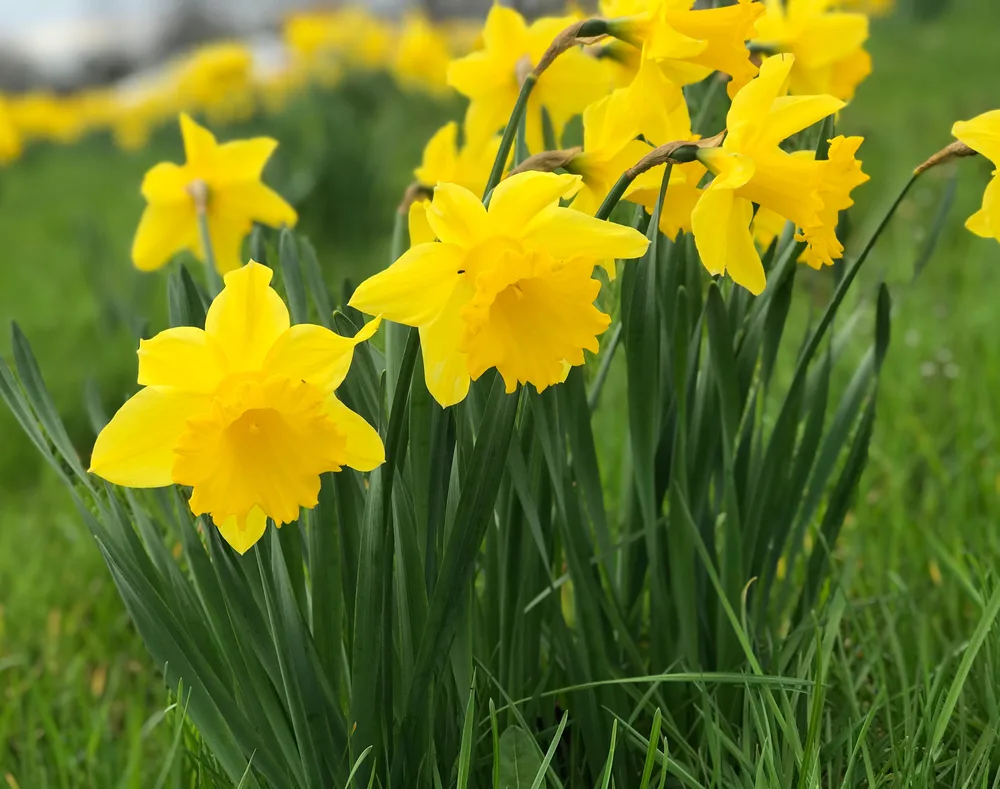
Daffodils (Narcissus) are spring perennial bulbs in the Amaryllis family.
The bulbs are generally planted in the fall. Over winter, the flower stem and leaves form in the bulb and these emerge in late winter before the plant comes into flower the following spring.
Most varieties grow a single flower from each bulb. These distinctive blooms are easily recognisable, with a central ‘trumpet’ surrounded by half a dozen petal-like sepals.
As a spring ephemeral, they only bloom for a relatively short time.
Lengthening days and warmer temperatures trigger the plants to fade and die back, and the nutrients gathered in the spring return into the bulb. These tiny little bulbs will spend the next three seasons underground preparing to burst forth with new growth again next spring.
Daffodils naturally produce new bulbs over time, expanding across your lawn like a sunny-colored army. And what better way to be invaded, than with cheery, yellow flowers.
Though not native to the United States, Narcissus species grow well in hardiness zones 3B through 10, which encompasses most of North America.
Narcissus pseudonarcissus is the most common type in Europe and the British Isles.
Where Should I Plant Them?
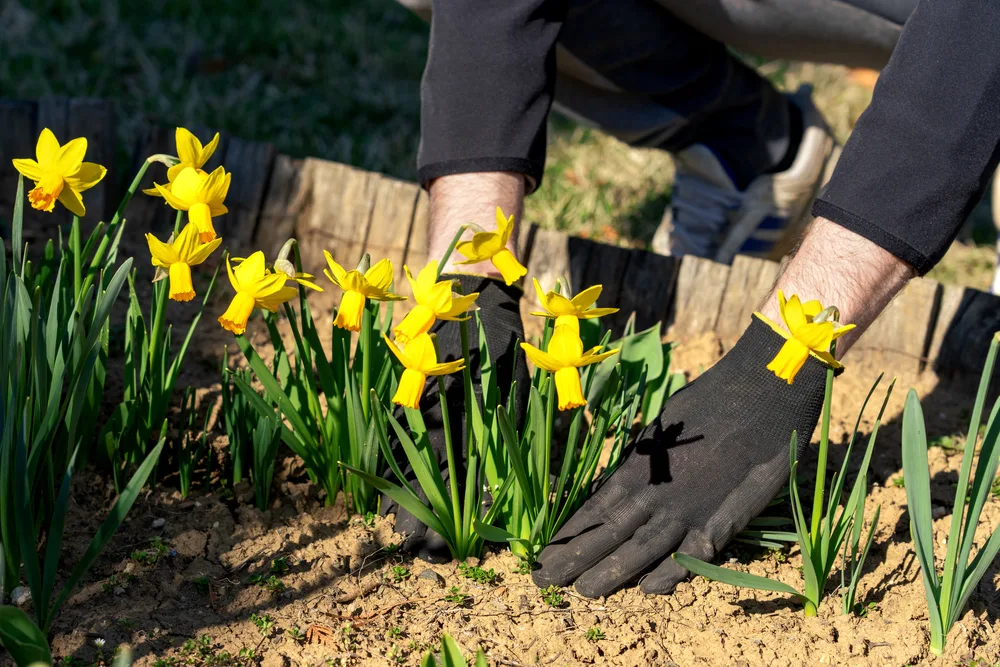
Daffodils are relatively unfussy and happily grow in many gardens. You can grow them in a wide range of lighting or soil.
As long as there is full sun or light shade, and as long as the growing medium or soil is moist but not waterlogged, you can grow them:
- In pots, planters or other containers.
- As an element within ornamental beds or borders.
- In your lawn.
- As garden bed edging along the fringes of an annual growing area.
- As part of a perennial polyculture.
- Beneath fruit trees (as part of a fruit tree guild).
- In a naturalistic light woodland/ wildlife area.
- On a slope or natural hillside.
We’ll talk a little more about how exactly to grow daffodils in different settings as we go on to explore the many reasons why growing them is such a good idea.
But first, let’s take a brief look at choosing the daffodil variety you wish to grow.
Choosing Daffodils
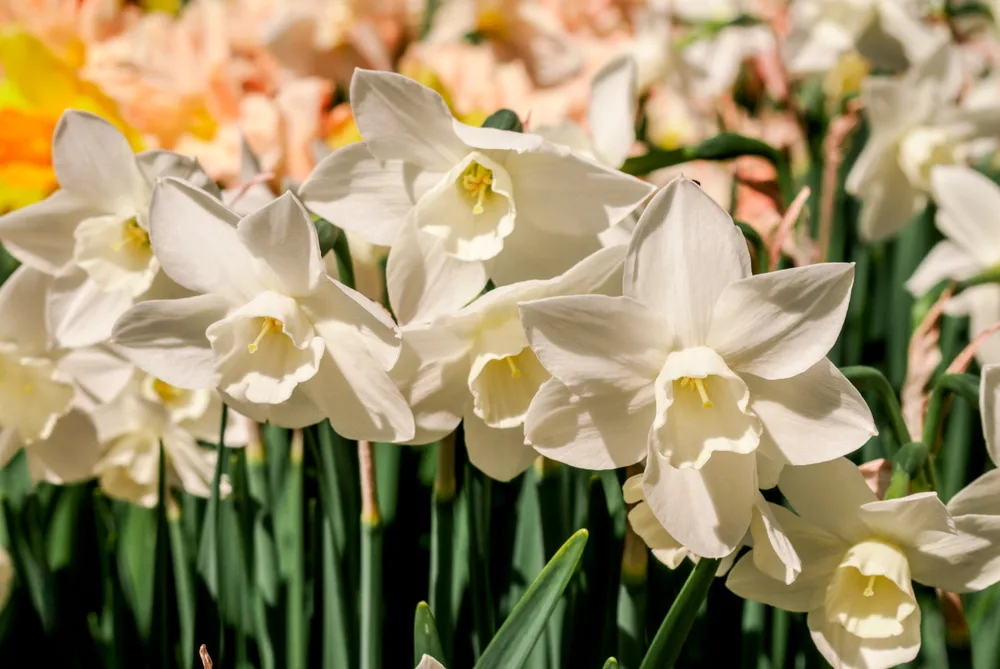
There are a great many different Narcissus varieties. But choosing which to grow in your garden is always a case of aesthetics.
Botanically speaking, daffodils are divided into thirteen groups based mainly on their flower form.
Generally, all daffodils grow best in light shade or partial sun and are suitable for a wide range of soil types as well as climate zones.
So which of the many cultivars to opt for will largely depend on your preferences when it comes to flower shape, color, appearance, fragrance etc..
These thirteen groups are:
- Trumpet daffodils
- Large-cupped daffodils
- Small-cupped daffodils
- Double daffodils
- Triandrus daffodils
- Cyclamineus daffodils
- Jonquilla and Apodanthus
- Tazetta daffodils
- Poeticus daffodils
- Bulbocodium daffodils
- Split corona daffodils
- Other daffodil cultivars
- Daffodils distinguished only by botanical names.
When choosing daffodil bulbs, the larger the bulbs are, the better. Make sure the bulbs you’re purchasing are firm, with no signs of damage or mold.
You’ll find plenty of cultivars on sale as summer fades and fall begins, both online and at stores, garden centers, and nurseries in your area.
Here are a few well-known online vendors of bulbs:
If you already have daffodils in your garden, you should consider dividing the clumps, and spreading them out or transplanting them to different growing areas. If you’ve got an especially abundant bunch of bulbs, you can share them among friends and family.
Why Should I Grow Daffodils?
Whether you buy your daffodil bulbs or transplant them from elsewhere, you’ll find they can be put to great use around your garden.
Here are just some of the reasons why growing daffodils is a great idea.
1. Daffodils Bring Color to the Garden Early in the Year.
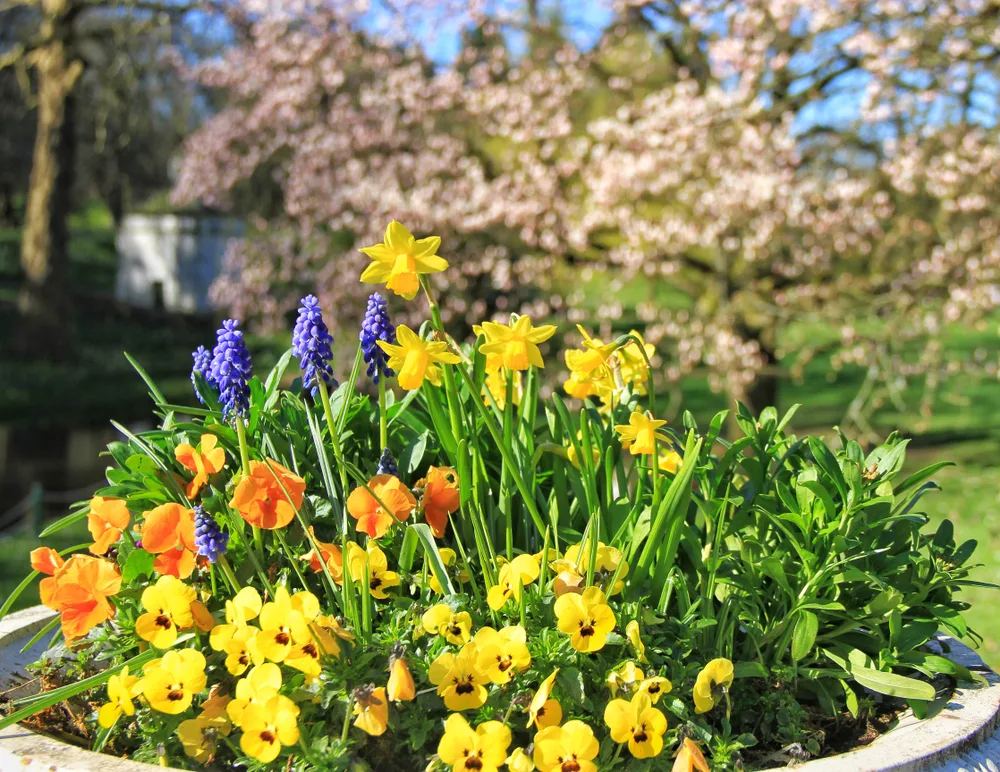
The main reason to grow daffodils is for their attractive colors and appearance.
Many varieties bring cheerful yellow and orange tones to your garden at a time of year when bright, warm colors are less evident. Usually, around the time when winter feels like it will never leave, these beautiful flowers poke their heads up and remind you that spring is just around the corner.
Just what the doctor ordered to chase away those wintertime blues.
Whether you place them in pots or containers, in or around the edges of beds or borders, in your lawn, in a polyculture of useful perennial plants, beneath fruit trees or elsewhere, these flowers are a great ornamental plant.
Companion planting daffodils with other floral companion plants help to create beautiful ornamental gardens.
For companion blooms, think about planting daffodils with:
- Crocus
- Alliums
- Hyacinths
- Bluebells
- Irises
- Tulips
- Forget-me-nots
For a longer-lasting display of color, you should also plant daffodils alongside other flowering plants that bloom just after the daffodils have died back.
2. They Grow in Full Sun or Partial Shade.
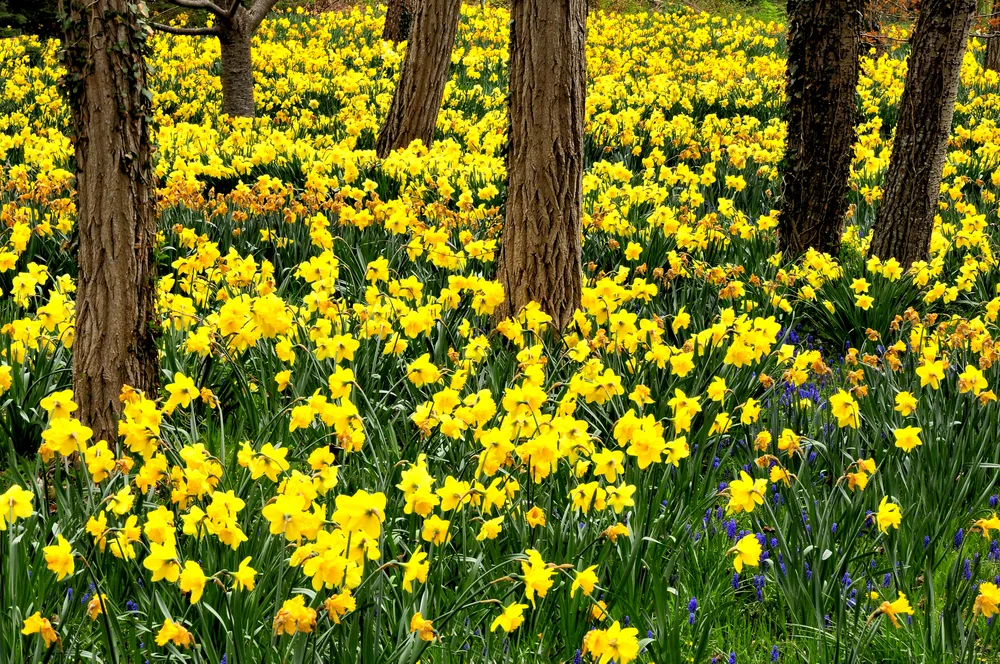
Since they grow in full sun or light shade, daffodils can be a very useful plant for those interested in forest gardening. There’s nothing more breathtaking than a sea of yellow sweeping through the forest.
The daffodils can take full sun when trees and canopy layers of the garden aren’t fully established. But they can also cope with a little light shade once the canopy does begin to form.
The fact that they can do well in full sun or partial shade can also make them a more flexible plant choice for other areas of your garden.
For example, daffodils are an excellent choice for containers or a garden bed on a lightly shaded patio or in a lightly shaded garden area.
3. Daffodils Catch and Store Nutrients
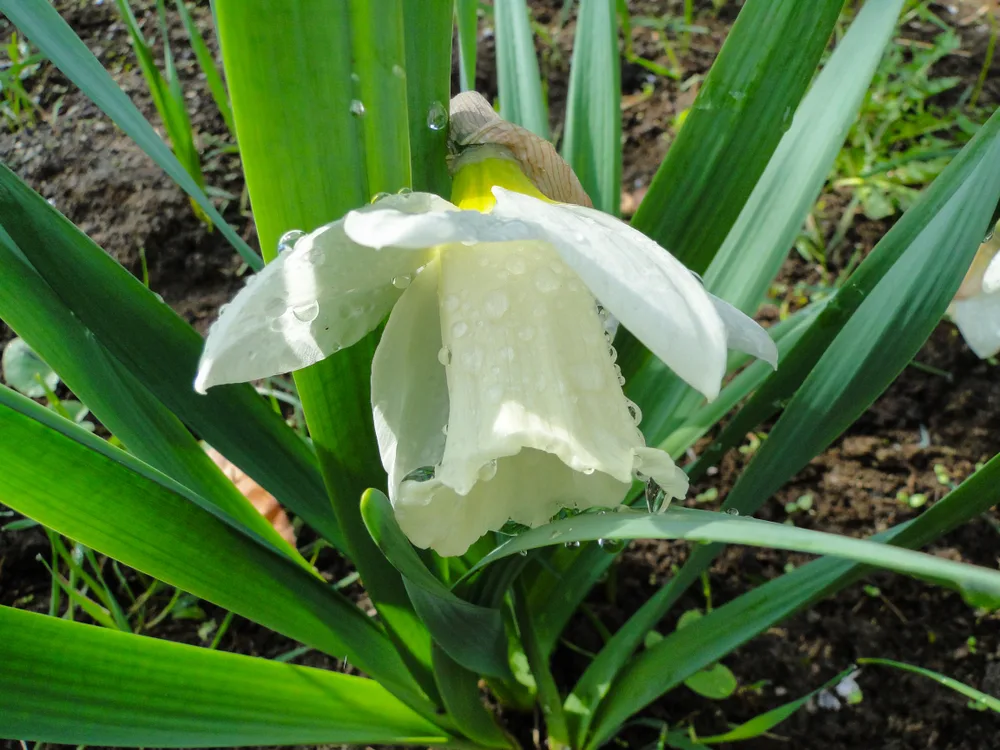
When daffodils grow in the ground, they catch and store nutrients in the soil. This is a time when spring rains can wash nutrients away. So catching and storing them in the ground helps us preserve the fertility of our gardens.
Unlike other plants, which may sequester and use those nutrients over the coming months, daffodils and other spring ephemerals last only a brief time.
Plant daffodils near the top of a site, and when they fade and die back after flowering, a portion of the nutrients in the plant will be released and flow down to other plants that may need them.
4. They Provide Nectar for Early Season Pollinators
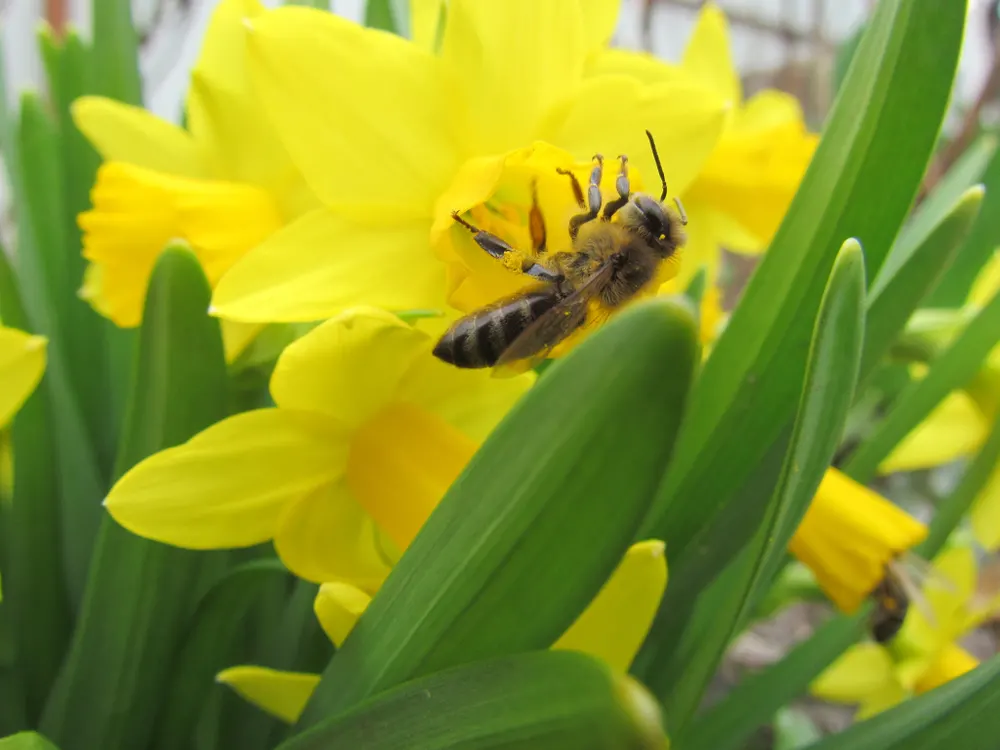
When in bloom, early in spring (or even late winter), daffodils are an excellent plant for bees and other early-season pollinators.
They provide an important source of nectar for these beneficial insects when few other food sources are available.
Daffodils can be particularly useful for planting around fruit trees, or other edible crops that require pollination in the spring.
Since the daffodils come out a short while before the trees blossom, pollinators will already be snacking on the flowers. So they’ll be readily available to pollinate your fruit trees once the blossom is out.
For this reason, daffodils are the perfect companion plants for fruit trees such as:
- apple trees
- pear trees
- quince trees
- plum trees
- cherry trees
And a range of other other temperate climate fruit trees.
5. Daffodils Take Little Care and Will Come Back Year After Year
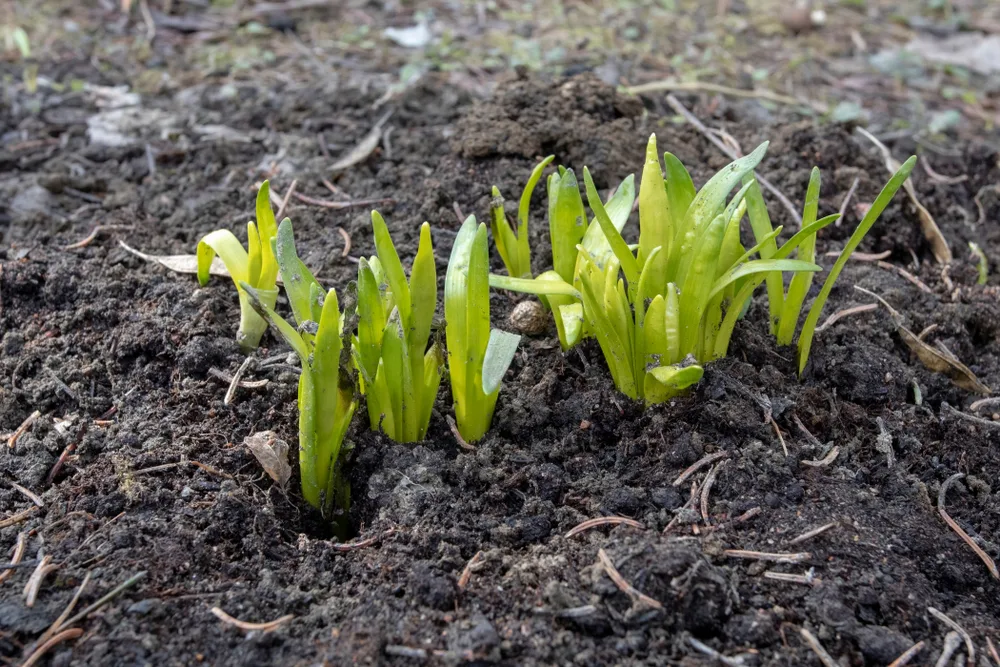
Not all of us have time to take care of lots of annual, high-maintenance flowers. Daffodils, however, couldn’t be easier to grow and care for.
Once you’ve planted them, they’re an excellent low-maintenance plant.
They require little care and as a perennial, they will come back to enhance your garden year after year.
Choosing low-maintenance perennial plants like daffodils is a great way to reduce your garden workload. More color, less work. Who doesn’t love that?
And it gives you more time for the plants that make the biggest difference in your life – edible plants.
Due to their ability to attract pollinators (and for other reasons given below), daffodils are not only easy to grow, they can make other edible crops easier to grow too.
6. They Can Be Used To Suppress Grass Around a Fruit Tree or Garden Bed
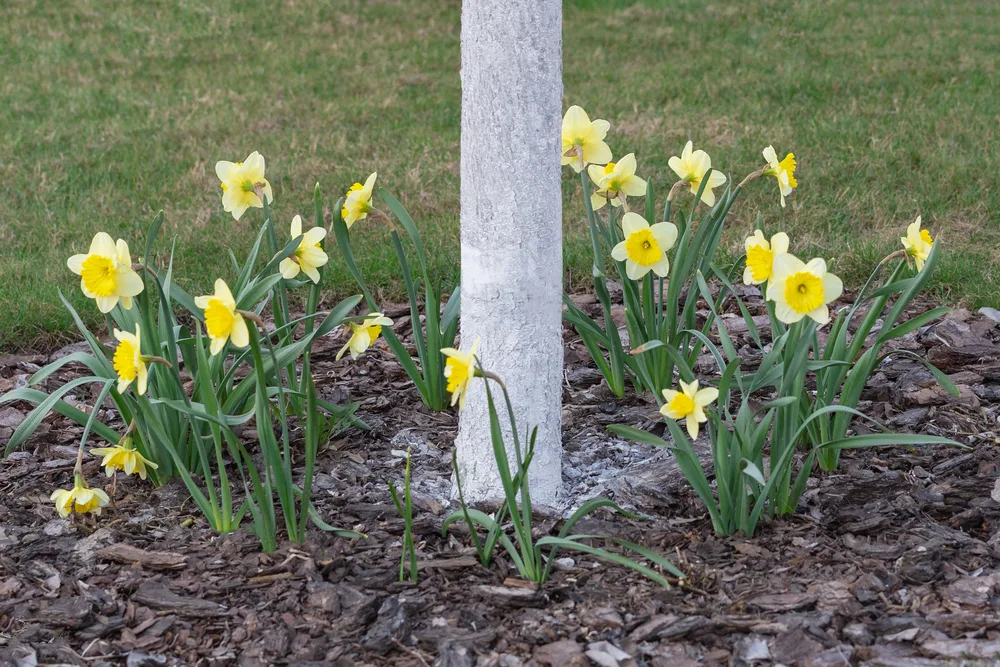
Daffodils planted in a ring around the eventual drip line of a fruit tree help to prevent grasses from creeping in around it.
It’s important to suppress grass growth within the root zone of a young tree because the grass competes with the tree roots for water and nutrients. And as we’ve already discussed, the daffodils will give back any unused nutrients to the young tree.
Grass growth can also create a bacterial, rather than fungal environment. But a fungal environment is what you want for optimal fruit tree health, growth, and yields.
Similarly, daffodils can also be closely planted along the edge of a garden bed or border, to prevent the grass of a lawn from spreading into your growing area.
7. Daffodils May Help Repel Deer and Other Animals
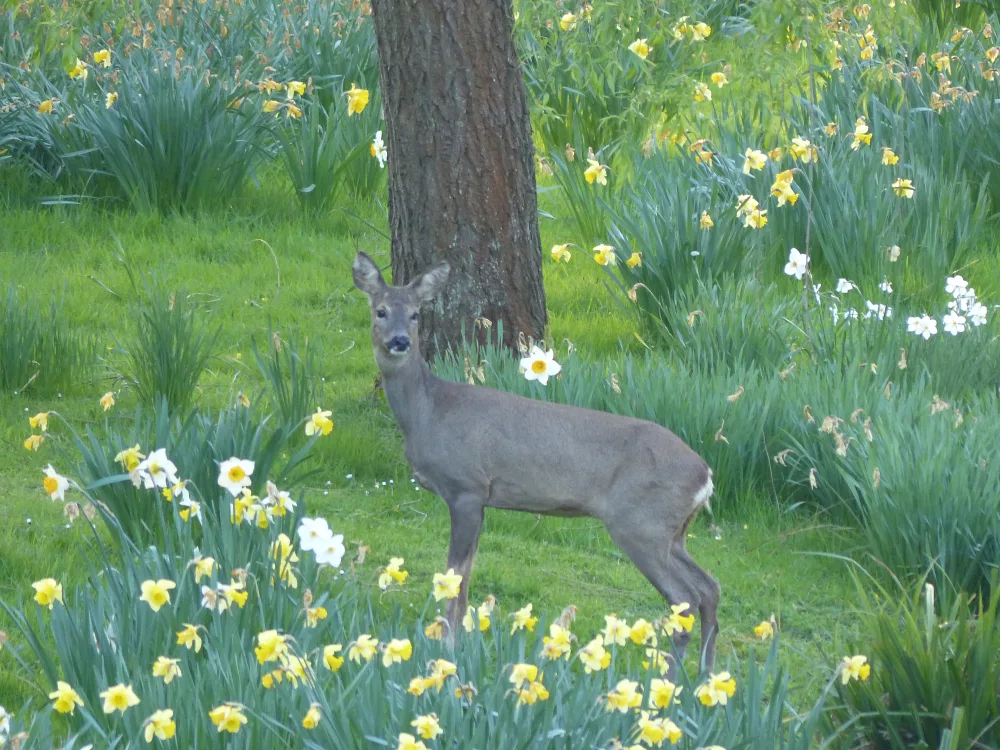
Daffodils are poisonous not just to us but also to a range of other animals. There is evidence to suggest that animals somehow know this and will largely leave them alone.
The large bulbs are believed to repel burrowing creatures like voles, moles, and gophers; while the above-ground parts of the plant may help to encourage grazing animals like deer and squirrels to graze elsewhere.
For more ways to keep deer from nibbling in your garden, read 11 Ways to Keep Deer Out of Your Garden.
8. They Help Prevent Soil Erosion
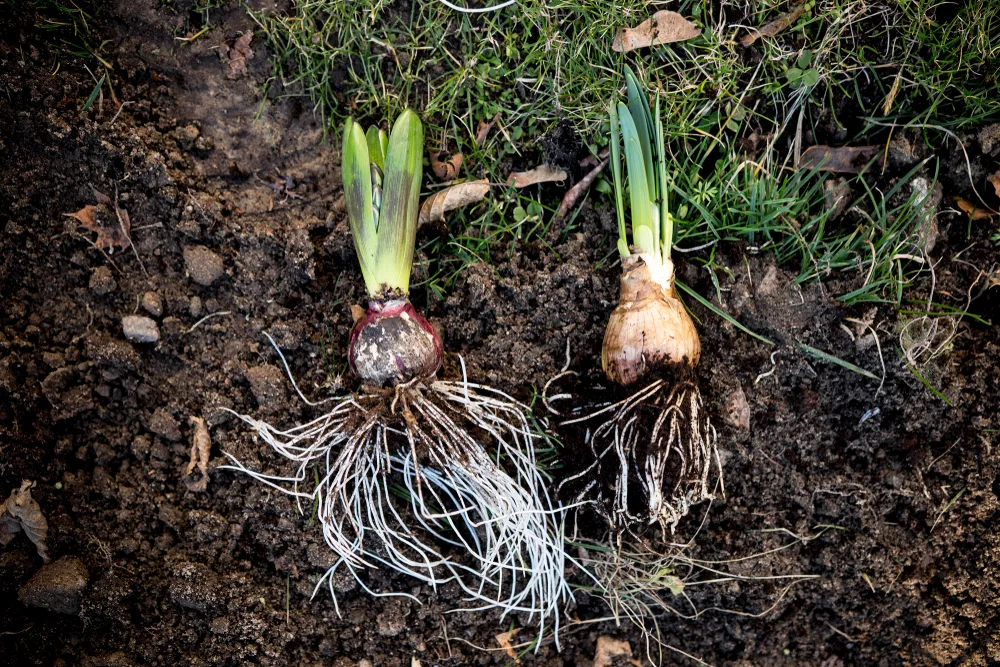
Early spring rains are rich in nutrients. But unfortunately, they often cause problems with soil erosion where they’re heavy.
Spring ephemerals like daffodils whose root systems are active during this time catch and store water and nutrients that will later be beneficial to other plants. But they also help to stabilize the soil and prevent topsoil from being washed away by spring rains.
9. Daffodils Help Stabilize a Hillside
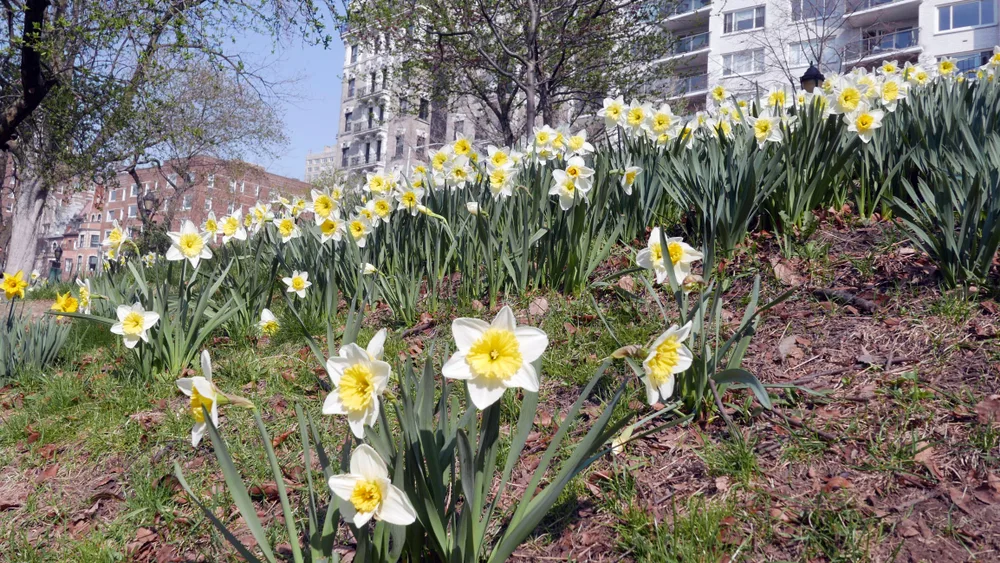
Their active root systems in spring, and foliage that pops up to provide vegetative cover early in the year, can be especially beneficial on sloping sites and hillsides.
Planting the right species can help in hillside or slope stabilization. So daffodils can be a good choice for inclusion in such a landscape scheme.
The bright flowers also look particularly stunning set against a steeply sloping bank.
10. The Flowers Can Be Used to Make a Yellow Dye.
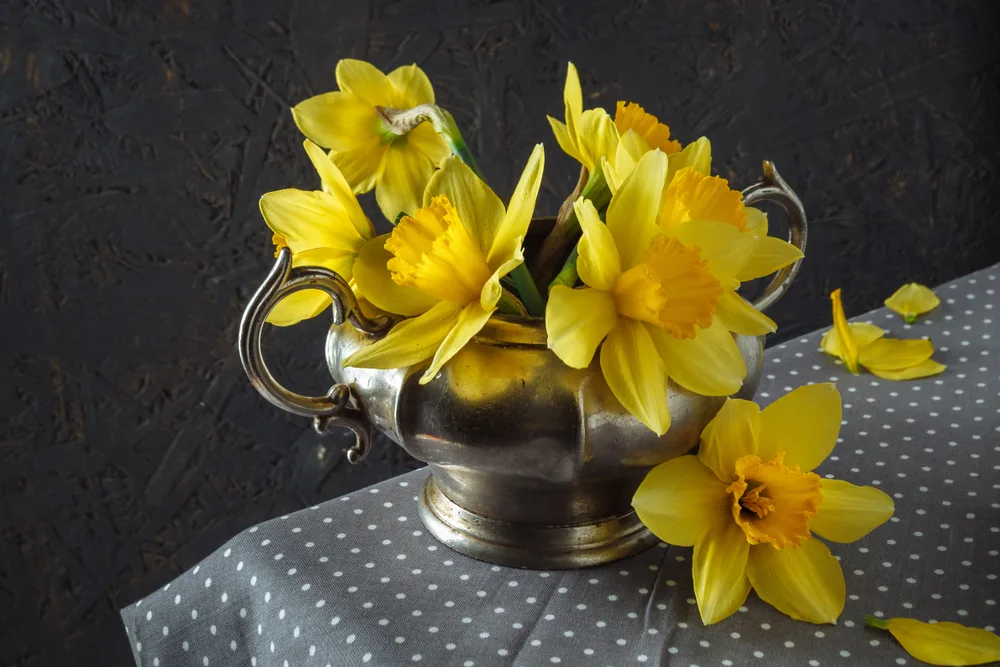
Daffodils are usually best left in the ground. However, there are a couple of ways to use daffodils inside your home.
Firstly, and most obviously, daffodils can be cut and used in decorative flower arrangements of fresh spring flowers inside your home.
However, daffodils will not last long when cut, and placing them in a vase of water with other cut flowers can shorten their vase life too, so this is something to think about.
But there’s another use to consider: daffodil flowers can be used to make a yellow dye. For more details on this, check out the link below:
Daffodil Petal Dye @ wooltribulations.blogspot.com.
Daffodils may not be in bloom for long – but they’re more useful in your garden than you might have imagined. So perhaps you’ll look at them not merely as an ornamental, but also as a very useful garden plant.

Get the famous Rural Sprout newsletter delivered to your inbox.
Including Sunday musings from our editor, Tracey, as well as “What’s Up Wednesday” our roundup of what’s in season and new article updates and alerts.

